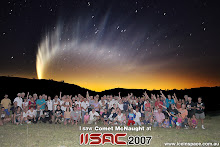
In Part 1 I discussed in detail about religious works produced by initiated Aboriginal persons.
Are these Art Works the only true Aboriginal Investment Art? As I have stated on numerous
occasions, Aboriginal art styles varied right across Australia. If you wish to purchase art from only initated persons you are not going to enjoy all the varied styles of our art. Much painting
was & still is done for cultural reasons. In areas of Australia where our people were removed,
exterminated or simply converted to Christianity early in the 1800s initations (at least in the
tribe you belong too - it is usually possible to get iniated into another tribe if you want to) can no longer occur. Does that mean that Aboriginal persons from those tribes know nothing about their culture so can not paint authentic art? No. Aborigines everywhere have retained a knowledge of their culture, & as art has always been a large part of our culture, we have retained a knowledge of our art. Many of our 'dreaming stories' teach principles of right & wrong; so have been remember and are still taught to our children. Important land marks & sites are still known and the stories connected with them repeated. In addition in many instances families still retain guardianship over art sites; some of which are on the edges of big cities such as Sydney. As our culture is 'not to share our knowledge with un-apreciative persons' & government policies of yesteryear also discouraged talking about cultural matters many persons are unaware of how much knowledge modern Aboriginal persons still retain. Therefore some comments about "authentic Aboriginal Art" are spoken more in ignorance than in fact. Non-initated Aboriginal persons can produce art that reflects accurate knowledge of our culture & laws and the history of their tribe, clan, family and ancient (& sometimes current) religious and spiritual beliefs. Such artists would not consider painting anything that their gender or family connections were not allowed to paint, and their 'aboriginality' shows in their work. High quality Aboriginal art from all areas of Australia is available and as we hope 'truth replaces myth' in the future some paintings and other works of art purchased today may increase greatly in the future. The above painting was produced by a modern artist using ancient symbols & spiritual concepts. (For details of painting & understand its symbols please see www.aboriginalarttreasure.com/awards.php) It's meaning would be understood by all Aborginal persons & many people familiar with our culture.
Are these Art Works the only true Aboriginal Investment Art? As I have stated on numerous
occasions, Aboriginal art styles varied right across Australia. If you wish to purchase art from only initated persons you are not going to enjoy all the varied styles of our art. Much painting
was & still is done for cultural reasons. In areas of Australia where our people were removed,
exterminated or simply converted to Christianity early in the 1800s initations (at least in the
tribe you belong too - it is usually possible to get iniated into another tribe if you want to) can no longer occur. Does that mean that Aboriginal persons from those tribes know nothing about their culture so can not paint authentic art? No. Aborigines everywhere have retained a knowledge of their culture, & as art has always been a large part of our culture, we have retained a knowledge of our art. Many of our 'dreaming stories' teach principles of right & wrong; so have been remember and are still taught to our children. Important land marks & sites are still known and the stories connected with them repeated. In addition in many instances families still retain guardianship over art sites; some of which are on the edges of big cities such as Sydney. As our culture is 'not to share our knowledge with un-apreciative persons' & government policies of yesteryear also discouraged talking about cultural matters many persons are unaware of how much knowledge modern Aboriginal persons still retain. Therefore some comments about "authentic Aboriginal Art" are spoken more in ignorance than in fact. Non-initated Aboriginal persons can produce art that reflects accurate knowledge of our culture & laws and the history of their tribe, clan, family and ancient (& sometimes current) religious and spiritual beliefs. Such artists would not consider painting anything that their gender or family connections were not allowed to paint, and their 'aboriginality' shows in their work. High quality Aboriginal art from all areas of Australia is available and as we hope 'truth replaces myth' in the future some paintings and other works of art purchased today may increase greatly in the future. The above painting was produced by a modern artist using ancient symbols & spiritual concepts. (For details of painting & understand its symbols please see www.aboriginalarttreasure.com/awards.php) It's meaning would be understood by all Aborginal persons & many people familiar with our culture.



